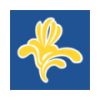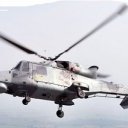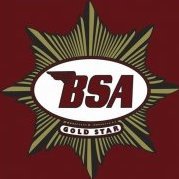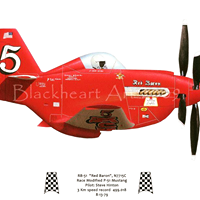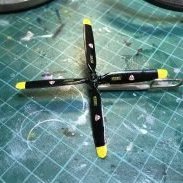Search the Community
Showing results for tags 'Azur'.
-
Hi all. I built this some time back, but as I dont recall seeing one of these on here I thought I would post it, Its from the Azur kit, very short run so lots of filling and sanding was needed all through the build. its finished using humbrol 27002 and Xtra Color varnishes. I hadnt seen this style of roundal for the South Vietnam Air Force before, so being a fan of something a bit different I finished it using the kit supplied South Vietnam decals. Thanks for stopping for a look, hope you like it. Pete. Thanks for looking Pete
-
Hello I am going on with my kits which were waiting for some work to be finished. This time it is an old Azur kit of the Nieuport Delage sesquiplan family that I had already built three. This is a NiD-52 which was selected in a contest in 1927 and built under license. There were more than 90 built between 1929 and 1931. They equipped three groups with two flights each and became the lead fighter of the new republic. The NiD-52 had the small straight lower wing and the upper wing with ailerons on the outer two third of the trailing edge. They were at the beginning covered with aluminium paint. At the beginning of the civil war they got some red stripes and a few like this one were camouflaged. S/N 3-50 had a modified windscreen and was based at La Rabasa airfield (Alicante) at the beginning of 1937. All comments are welcome. Cheers. Patrick
- 16 replies
-
- 52
-

-

-

-
As my own rule dictates, the next topic can be made when the previous one has disappeared from the first page.:) And soon my arsenal of finished builds will be empty too. But in the meantime, I offer you an elegant bird. Farman F 223 1/72 from Azur box. Mostly straight out of the box, with a few small details added.
- 22 replies
-
- 67
-

-

-
Hi everyone, I know, I am starting a new kit, and I am not finishing many. Who cares. This kit is special. My wife and I took our first holiday in six years in September. In London she gave a presentation at the Royal Geographical Society (she is the brainy one), and this is where I first met in the flesh Pat, aka @JOCKNEY and the delightful Mrs. Jockney. Lo and behold, the next day was my birthday and after a great day at the RAF museum, at the birthday dinner that night the man gives me a heavy, sizable box displaying the density of haggis. And here we are: a monster, four-engined French bomber. I am delighted with this kit and proud the French aeronautical industry knew how to use axe and chainsaw in order to create such graceful aircraft. Seriously, I love these inter-war monsters: Amiot 143, Bloch 210, etc. So this is a real treat. The plan is to build it OOB (mainly because detail photos of cockpit, etc. do not seem to exist) with the exception of some seat belts. And above all to enjoy every minute of the build. Here are a few photos: The monster in all its glory! The fuselage: As you can see, the length of the fuselage is about 30 cm; a serious beast. Azur ask you to drill some portholes (fair enough) and to open a window at the front of the fuselage (less obvious as to why the onus should be on the modeler). Where these Froggies are cheeky, is that they tell you to cut and fit your own windows in the openings.... The two holes on the wing root will be opened up and will receive two spars, as but joints on such big wings are a recipe for disaster. Here is a view of the cockpit being built.. I am sure there should be a ladder somewhere for the poor pilot to reach his seat. This is the extent of the build so far. I foresee some hectic and scary moments later on, but at least I know I won't get bored. A super thank you to @JOCKNEY for this Birthday present (although he doesn't know how much I cursed him when I saw how little room was left in my suitcase!) Thanks for watching. JR
- 16 replies
-
- 17
-

-

-
After a bit of an unintended break from BM and a lull in modeling in general, I'm back this evening with the AZUR 1/72 GAL ST-25 Monospar. I picked this kit up last summer for a very nice price ($15) thinking I would try to finish it as one of the airframes impressed by the RAE or RAF during the war. When the Model Minutes discord started a GB about export vehicles, I decide instead to build the included option of an ST-25 flown by Eloy Fernández Navamuel during the Spanish civil war. Eloy obtained the aircraft while on holiday in France, just days into the Spanish Civil War, and flew the machine as a courier in support of the Republican cause for a number of months. On a few occasions, he reportedly even used the machine to drop grenades on unsuspecting Nationalist forces! At some point Eloy got the sense the Republican cause was headed for defeat, and unable to maintain the aircraft, he reportedly abandoned it before fleeing to France, and later worked as an engineer in Venezuela. The kit builds quite well, though the choice of a full resin interior seemed a slight bit odd to me. In any case, the real challenge was the Vac canopy - this was the first time I used one, and while the result is alright, the fit is not precise and painting it proved frustrating. In the end, the only parts I'm truly unhappy with are the facts I placed the fuselage silver stripes slightly too low and the silver spots near the tail slightly too high. Either way, I would happily build another of these. With a bit of luck I'll be able to track down another soon. Right then - the pics. Should the sun decide to make a rare appearance any time soon, I'll replace the pics. As a final note, I have to say - I rather like the shape of the wing, especially viewed from above. Many thanks, Tweener
-
Now that I am properly home from Uni for the first time in some months, I decided to break into the kits again and see what could reasonably be built over the following few days. While I might have liked to build another Fury, Gladiator, or Siskin, those and their Aftermarket decals are all stashed away still, so for now, the Azur Fleet Finch that recently arrived will have to be good enough. First inspection of the sprues shows that the earlier Fleet Model 10 can also be built from this kit, and I did briefly consider doing so, but the Portuguese Model 16 Scheme included won me over. The cockpit consists of a floor, seats, resin sticks, and instrument panels that sit inside of a separate upper fuselage section. The sidewalls are detailed from the box and nothing was added to this section. In no time at all, this was closed up, and the engine was built while it all dried. This consisted of attaching 5 separate cylinders to a central part, and I must admit that I will avoid ever building an engine like this in the future if I should be able to. I think I finally got the pieces aligned well enough after my third try, and in any case, they are now staying however they are. After this, the engine was attached to the front and the vertical tail set into place. The gear legs then followed the lower wing into position. Tomorrow I will add the horizontal tail, exhaust units, and attach the upper fuselage section before filling in the few small gaps I expect will arise. With any luck, I'll finish building this by Thursday, so that I can start on another new arrival shortly after. I'd love to get cracking into the AMK 1/72 L-29, but considering the amount of aftermarket I bought for that kit and the amount of time it'll take to make progress, that will be put off for now. Thanks all, Tweener
-
This GB has really sneaked up on me. This allow me a chance to finish a stalled build from MTO 1 see below I haven't worked out the easy way of doing Vichy stripes so if you have done this without creating an orange mess, PLEASE let me know cheers Pat
-
As my LeO was progressing, I had a look around the stash to see what else would fit the French Fancy GB. I thought I had built most of the French aircraft during the Heller GB but as the summer holidays took hold, I "accidentally" found myself in a few model shops on holiday and came away with a few kits - 3 of which were French subjects. I've got a Potez 630 from Azur, another Azur Loire et Nieuport LN 411 and this weekend, a Heller Musee Block MB210 from Clifton Curios. As I had mixed up the internal blue, for the LeO, I thought I'd make a start on this one and see how it goes. The resin parts are really small and quite tricky to get off the base. So far so good though.,... No breakages, Some good looking decals. I'll be doing the French scheme. I started with the cockpit as I had the blue ready to spray in the airbrush from touching up the LeO internals. I then left this in its box and occasionally did something to it while the LeO was drying. All of this work was during the LeO build a little while back. The current status is this : The cockpit went together no problem and the fuselage fitted together well. I've got 2 wings too. The area on the front of the engines isn't great but I don't know how the resin engines will fit and if it matters! I should be able to concentrate on this one more now the LeO is done and the Liberator (in the High Wing GB) is mostly assembled.
- 23 replies
-
- 13
-

-
Having not started the Farman kit, and with uncompleted Builds all over the place the obvious thing to do is to post a fresh build thread rather than finish an existing one ! To be fair this is also prompted by the fact I'm building not one but 2 French aircraft in the High Wing GB, and I was feeling guilty I was letting @Wez down. So please see below, this will go nicely with my recent Potez 452 Parts and instructions pictures to follow. Cheers Pat
-
The Curtiss Hawk 75 saw wider use than just about any other fighter in World War Two, various models of the Hawk 75 being flown in a dozen air forces, and employed on both sides of the conflict. The type was still in service with one squadron of England's Royal Air Force in Burma throughout 1943. During the 1930s the Curtiss company had sold many of its Hawk biplane fighters overseas, and managed to do the same with its new modern Hawk 75 all-metal monoplane fighter. When the U. S. Army Air Corps had taken up the Hawk 75 as the P-36 in 1937, the Army required Curtiss to deliver machines powered by fourteen cylinder Pratt-Whitney Twin Wasp radial engines. When France placed substantial contracts with Curtiss for the Hawk 75 in 1938, machines powered by the Twin-Wasp were delivered, though this engine, which seldom could be made to deliver its designed horsepower, had proved far from satisfactory in U.S.A.A.C. service. On later Hawk 75 export contracts, Curtiss replaced the Twin-Wasp with its own radial, the nine cylinder Curtiss-Wright Cyclone. While this engine had its own problems, mostly involving lubrication, it developed more horsepower than the Twin Wasp, and so offered improved performance. Hawk 75s with Cyclone engines built to fill later French orders were, after the fall of France in May, 1940, delivered to England and the Royal Air Force, along with some tag-end examples of the earlier Twin Wasp models. The Hawk 75 was dubbed 'Mohawk' in English service, and the Cyclone powered version was known as the Mohawk Mk IV. This was armed with six .30" machine-guns, two synchronized and four carried in the wings, in contrast to the original armament of the U.S. Army P-36, which mounted only two synchronized machine-guns, one .30" and one .50". The Royal Air Force considered its Mohawks unsuitable for first line squadrons, but soon decided they were adequate to replace or supplement obsolescent equipment overseas. In the summer of 1941, about 80 Mohawk IVs were sent to the South African Air Force, for use against Italian forces still in Ethiopia. With the growing possibility hostilities might break out in the Far East, a similar number of crated Mohawk IVs were shipped to India, where the RAF had practically no modern equipment at all. These arrived in October of 1941, and once the Japanese had attacked Pearl Harbor and Malaya, and invaded Burma, getting Mohawk IVs in India into service took on critical importance. No. 5 Squadron, an old 'India' unit that had operated biplanes on the Northwest Frontier since the end of World War One, became operational with the Mohawk IV in March of 1942, and was for some months the only squadron flying modern fighters in India. A new squadron, No. 155, was formed in April at Peshewar, but not until late July did this unit begin receiving the newly assembled Mohawk IVs it was to fly. No. 155 squadron was fully equipped and trained by October, and went into action at the end of that month, flying from Calcutta to attack a Japanese airfield at Shwebo, on the Irrawadi River in Burma. In November, both Mohawk squadrons were brigaded together in 167 Wing, based initially at Argatala in Bengal, to fly in support of Gen. Irwin's December offensive into the Arakan coastal region of Burma. By now the Hawker Hurricane had reached India in some quantity, and the two Mohawk squadrons were mostly employed as fighter bombers and bomber escorts, though on occassion they were pressed into service as interceptors to defend their own airfields, and sometimes even flew together as a Wing on offensive patrols. In the course of these duties, pilots found the Mohawk IV was able to match turns in a dogfight with the Japanese Army's especially nimble Type 1 'Oscar' fighter, something the Hurricane could not do. When employed as a fighter bomber to attack airfields and troops and transport, the Mohawk IV usually carried only a light fragmentation bombs beneath their wings. The Curtiss engineers had not anticipated the Hawk 75 being used on such duties, and the wings of the lightly constructed airframe were doing about all they could to bear the weight of their machine-guns and ammunition. At the end of January, 1943, the two Mohawk squadrons separated. No. 5 remained engaged over the Arakan, meeting little aerial opposition, and was re-equipped with the Hurricane Mk IID fighter-bomber in May. No. 155 was dispatched north to Imphal to support the first offensive of Gen. Wingate's 'Chindit' columns, which depended on air support for both 'artillery' and supplies. As the 'Chindit' columns began retiring in April, the squadron had to defend its airfield against heavy attack by Japanese Army twin-engined bombers. In June, No. 155 Sqdn, now the sole unit flying the Mohawk IV, returned to Argatala. The Arakan offensive had been repulsed by the Japanese, but a renewal was intended. 155 Sqdn frequently flew south to attack Japanese troops and transport on the Chindwin River, a major artery for Japanese supplies. In September, the squadron returned north to Imphal, where it was similarly employed against more northerly stretches of the Chindwin, while English preparations for the second drive into the Arakan region continued. 155 Sqdn met very little opposition in the air from the Japanese Army while conducting these operations. Early in January, 1944, 155 Squadron relenquished its Mohawk IVs, and was re-equipped with Mk VIII Spitfires. This model represents a late service Mohawk IV of 155 Squadron, serial BS798, with the identity letter 'B'. It was photographed in flight during August, 1943, while 155 Sqdn operated from Argatala. Very likely it remained in service with the squadron till the end of the Mohawk's service career. Mohawk IV BS798 'B' certainly was still in service with 155 Sqdn during November, for it took part in the last aerial engagement in which the Mohawk IV fought Japanese Army aircraft. When a Japanese Army Type 0 reconnaissance plane flew over the airstrip at Imphal on November 9, 1943, it was the first time in some weeks 155 Squadron pilots had seen Japanese aircraft aloft. Two Mohawks took off to engage, but were easily outpaced by the speedy twin-engine Japanese machine. Around noon, seventeen twin-engine Type 97 bombers, with a half dozen Type 1 fighters escorting, attacked the Imphal strip. Flying Officer Harry Bishop clambered into the cockpit of BS798 'B', and with several others took off in the wake of the destructive raid. The 155 Sqdn pilots caught up to the Japanese formation on its way back home. The escort, from 50th Sentai, held the Mohawks off from the bombers, and in the melee, a Type 1 fighter fastened onto Fl/Of Bishop's tail. Fl/Of Tony Dunford, in another Mohawk, saw Bishop's plight, and shot the Japanese fighter down. Bishop observed it to crash and explode, killing its pilot, Cpl Kitaoka. The Mohawk IV in India offers several choices of interest to a modeller. I was initially drawn to doing a Mohawk IV of No. 5 Squadron, because of its long association with India (among my 'get to it someday' projects is a No. 5 Sqdn Bristol Fighter operating in 1925 against the Mahsuds in 'Pink's War'). That the Mohawk IVs of 5 Sqdn were for a time the only modern fighters in India made an early service example an attractive prospect. Learning the Mohawk IV had soldiered on so long as it had, long enough to bear the 'no red' SEAC national markings, drew my interest to a later service example, and tipped the balance towards a 155 Squadron Mohawk IV for a subject. The photographic evidence for 155 Sqdn is better, and shows a photograph is necessary. The picture which shows BS798 'B' so clearly among several other Mohawks shows variation in their roundels and even in their camouflage patterns. An additional factor favoring 155 Sqdn over 5 Sqdn for a late service subject is that in the latter unit, personal markings were common, and not all are recorded usefully, while this does not seem the case in 155 Sqdn. So BS798 'B' of 155 Sqdn, circa August 1943, got the nod. The kit was the old Azur Hawk 75 plastic, boxed as a Cyclone powered Mohawk IV. While this boxing includes a nice resin nine-cylinder motor, the fuselage halves present the long-chord cowling of the twin-row Wasp. Even for this smaller diameter motor, the 'mouth' of the cowling is far too deep and oval, which seems to be a common failing in model kits of this Curtiss type. I am curious to get ahold of one of the newer AZ Models kits to see how they handled this. The cowling front on the Cyclone particularly should look round enough it takes a moment to see it isn't. I did not go whole hog to correct the cowling (it is still not wide enough) but by shimming a bit at top and bottom, and trimming at the sides, I got the opening to strike the eye well enough that it looks about right. Sanding away the surface detail for the 'long-chord' cowling allowed me to make the slope out from fuselage sides to cowling look a bit steeper, and I scribed and scored in the proper appearance for the short-chord Cyclone cowling. This is the only improvement I made, though since the vacu-form clear pieces had aged yellow, I used a Falcon canopy, and made my own side-panels from 10 thou clear sheet. In doing 'little bits' at the end, I made my own exhaust stubs and tailwheel doors. I had fumbled away one of the former, and the latter just were too thick for scale, and too tiny to thin down readily. The bomb load is four Cooper fragmentation bombs under each wing, and these come from spare Roden sprues for Great War subjects. I don't usually show machines 'loaded', but it was that or scratch a pair of light service carrier racks. RAF bombs were supposed to have been painted green well before this, but operations in India were under the India Office, a notoriously penurious officialdom. Even before I saw a picture of yellow bombs being loaded on a Mohawk there, I felt sure the India Office would see mere orders to do so as no reason to repaint bombs which already had a good coat of paint on them that had lasted for years, at a cost of lord knows how many shillings per bomb. Mohawk IVs of 155 Sqdn late in 1943 are often depicted in profiles with the Dark Green and Ocean Grey uppersurfaces of the Fighter Command scheme. I suspect it comes from some photographs which show great contrast in uppersurface grey tones. Others do not show such contrasts, however, and Mohawks were delivered in Temperate Land scheme, as close as Curtiss could match, anyway. One more reminder that, though we all do like to try our hand at it, estimating color from grey tones is a mug's game. As far as the undersurface color goes, I got it lodged in my head a while back Azure Blue, or something like it, was used, and though Medium Grey is often called out instead, the Osprey number on 'Hawk Aces' shows blue undersurfaces in its Burma Mohawk profiles. Which is good enough for me. The Sky band and yellow identifiers are not masked but done freehand, guided by a technique of use only when employing a brush. A very shallow line is scribed in on the color boundary. As long as you have your brush sufficiently loaded with paint that can flow a little, and move along the line at a little distance from it, the 'trench' will stop the paint, and once both sides of the boundary have been painted, they will have filled the guideline. A bit of a rub with a 3000 grit pad removes any trace of unevenness. Just as with masking, you might get a little bleed across the boundary, but these are easily touched up with a definite line established. A wide, flat edged brush touched towards the boundary does very well for this. National and identity markings were scrounged, contrived, or home-made. An old Revell Swordfish decal sheet provided the 'C' proportion roundel, sans red center (to be separately applied), and an old Airfix Spitfire kit provided a 'B' in Sky. Having these ready to hand helped me decide on my subject. The 'B' decal color providentially matched exactly the paint in an old PollyScale 'Sky Type S' bottle. Most of the roundels are doubled, either to cover a red center or get the proper proportions. The fin flash is put together from the rudder stripes on an Airfix R.E. 8 sheet. Wife made the serial number decals for me. A note to the eagle-eyed. Ye, there i something askew with the starboard landing gear 'doors'. I didn't notice till reviewing the picture, and the model is already packed for the move. I wasn't trying for any wear-and-tear effect.... By the way, the oft circulated photo three 155 Sqdn Mohawk IVs including BS798 'B' is a detail of a larger picture, showing other squadron machines in 'vic' array.
- 16 replies
-
- 31
-

-
Royal Bulgarian Air Force, 2 Istrebitelen Orliak (Fighter Regimen), December 1938 - Karlovo Airfield Built almost OOB (except thee engine) with the red decals discarded in favor of Hu 60 to have the colour uniform, same with the flag on the rudder. Quite a few scratchbuild details on the engine required to look decent at least. I have used the vacuum canopy, but TBH there is not much difference. I used the injected one as a template to cut the masks At least intermediate skills required, imho P.S. Just after the shooting I realised I've missed the Pitot tube - in place now
-
Azur has just re-released (link) its 1/72nd Caproni Ca.310 Libeccio "Yugoslavian, Croat & Hungarian" kit - ref. A088 Sources: https://www.specialhobby.eu/nase-produkce/azur/caproni-ca-310-libeccio-yugoslavian-croat.html https://www.specialhobby.eu/en/1/1/caproni-ca-310-libeccio-yugoslavian-croat.html https://www.specialhobby.net/2021/05/azur-a088-caproni-ca310-libeccio.html V.P.
-
I started this three years ago in a Floatplane and Flying Boat GB but run out of time. It's a nice kit but complex with resin, etch and some scratchbuilt parts as well as being a biplane. The original build can be found here. This is where I finished way back at the beginning of 2018.
-
Good day, ladies and gentlemen! Let me present you my next model from my old 1/72 stash.
-
Hello As I wrote in a previous post my second 1/72 SNCASO Vautour is the bomber variant with this Azur kit. The difficulties are th same and again I scratch built the open airbrakes. I cut open the canopy for the pilot as well. The resin tanks came from the CMK range. Here she is as a Vautour IIB from the 92 Escadre de Bombardement in the early 1960s. Patrick
- 17 replies
-
- 37
-

-
Not a lot of people have heard about the Koolhoven FK58 it was a fighter built by the Dutch Koolhoven company for the French Air Force. Only around 18 were built before the invasion of the Netherlands halted all work. Built from a cloth covered steel tube fuselage and a Plywood wing it wasnt the most modern design but it was neatly designed with no glaring errors and had a decent turn of speed. It was used by Free Polish pilots but in the confusion towaards the end of the Battle of France it didnt manage to score any victories. https://en.wikipedia.org/wiki/Koolhoven_F.K.58 It was a relatively simple kit to build but had some problems. There was no way to secure the cockpit interior and there was no way to secure the engine. Bits of plasticard and crossed fingers got the fuselage together and the rest was simple. I didnt have the correct French Air Force colours so I used what I had Vallejo Bronze Green, Vallejo Dark Sea Grey and Humbrol Acrylic Dark Wine. The underside was Vallejo Sky Grey mixed with a spot of Vallejo Dark blue to give a hint of blue. All paint applied with a hairy stick. P1000921 by Stuart, on Flickr P1000902 by Stuart, on Flickr P1000903 by Stuart, on Flickr P1000905 by Stuart, on Flickr P1000906 by Stuart, on Flickr P1000908 by Stuart, on Flickr P1000910 by Stuart, on Flickr P1000913 by Stuart, on Flickr P1000915 by Stuart, on Flickr P1000916 by Stuart, on Flickr
-
hi guys here is my last work. This is a whatif for his fictional plane, based on the prototype VG33 , produced only in few number just before the fall of France in 1940. if she were produced one or two years before, she maybe would have equipped some squadrons. she wears the colors of a Curtiss H75 of GC I/5 in the beginning of 1940 ; the pilot was Edmond Marin La Meslée. i just improved the kit, the interior cokpit and some details. the worst part came from the canopy wich was completely unusable....yellow color. i spent a lot of time to vacuform a new one, many tries....here is the result, hope you like her :
- 11 replies
-
- 21
-

-
my last built , enjoy :
-
Hello folks, Here's my entry into this Group Build and I'm quite excited about it too as I'll explain later! I had planned to make an English Electric Lightning, specifically XR720 which flew a few days before my birthday in 1964. XR720 is an F.3 which would mean converting the Airfix 1/72nd kit using the Alley Cat conversion, then the reality of my situation hit. I am a very slow modeller, mostly because I have lots going on in my life but mainly because I only have a small window of opportunity to do some modelling anyway! Many of you will know that this man in his fifties is studying part time for a degree, fitting it in with work and the aforementioned lots going on in my life, taking on a conversion probably wouldn't be the wisest of things and probably wouldn't get finished before I have to recommence studies. Therefore, something OOB was called for. Fortunately, the long announced CMK/Special Hobby 1/72nd Dassault SMB.2 Super Mystère has finally, after what seems like an incredibly long wait (accompanied by lots of teasing glimpses of progress), has been released! I was very excited when this was announced, the Super Mystère has long been a favourite of mine, really since seeing a picture of the EC.1/12 Tiger Meet aircraft in 1972, it's a classic Cold War jet and as it's French, it has a certain je ne sais quoi. The Airfix kit from the early 70's is a nice kit but isn't up to today's standards, the more recent AZ kit has some shape errors so when this kit was announced I was very pleased indeed! It certainly looks in the box, to be the definitive SMB.2 in this scale! This would be my OOB subject. Although the kit has been manufactured by Special Hobby, French concern Azur got first dibs on the releases, this is the "Early" boxing and features NMF subjects, the "Late" boxing features camouflaged aircraft. AFAIK, the kit contents are the same. Unfortunately, none of the subjects in the box were from the year I was born. Fortunately, I've got plenty of decals from Berna Decals which include some other options. Berna Decal sheet BD72-78 features three aircraft one of which is No.151/12-YN from EC.1/12 at Cambrai in 1967... ...not 1964, curses! Searching through the excellent EM37 book on the Super Mystère, it lists the histories of every single aircraft which shows that No.151 was delivered to EC.1/12 on 01/08/63 after its first Major maintenance at Dassualt, it stayed with the unit 12/09/67 when it went to IAI at Lod for its second Major maintenance. Therefore the aircraft was on the unit strength during 1964! Hurrah!! So to cut a long story short, my subject will be Super Mystère No.151/12-YN, from EC.1/12, based at Cambrai in 1964.
- 5 replies
-
- 7
-

-
- Azur
- Special Hobby
-
(and 1 more)
Tagged with:
-
This is my first post in 'Ready for Inspection'. I'm still thinking about the right format. I believe the bulk of the images of the finished model should reside with the build log and I do not want to replicate the effort too much. Here's a teaser image for his build: The build itself, its background, stages, modifications, paintwork, scratch building and a lot of images can be found over at 'Work in Progress': Comments are welcomed here or in the build post. Thanks Ran
-
So... With the Sea King done (still need to update the build report with final images) and the A-26B done as well (here too some update of the build report is due) I'm off to my next build. The Hasegawa Typhoon is still stuck - looking for a missing part (PART J4, right side panel, front of cockpit is missing - if you have a spare J4, or can send me a photo with scale I will be very very happy) So - next build will be a new one. As my father's 77th birthday is coming up, I had an idea. My father was a mechanic with Squadron 119, IAF back in the end of the 50's and beginning of the 60's. He spent time working on the squadron's Vautour II N's. One day he was showing the cockpit to one of the new mechanics recently assigned to the squadron. The new guy was sitting in the front seat while my father was perched on the ladder showing him the different dials and knobs. At one point he was pointing to the Landing Gear lever telling the guy - 'You see this - never ever touch this one' and while saying that - accidentally moved it. All of a sudden this hissing noise was very noticeable and the front MLG started to retract. Luckily there was only a small amount of hydraulic pressure in the system and the MLG only retracted part of the way and not completely. As it happens with many aviation related mishaps - there were a number of malfunctions that contributed to this event - hydraulic pressure left in the system, rear MLG (the Vautour had 2 MLGs one behind the other) had a faulty WOW switch (that switch should have shut down hydraulics on the ground completely). The only damage to the plane was due to a tow bar that was connected to the front MLG and raise up as the MLG collapsed - to hit the front of the A/C. My dads punishment was to be re-assigned to the depot maintenance team - to help them fix the A/C. So, my idea was to build a Vautour II N as a birthday present. I had this idea quite a while ago so I already have the Azur 1/72 - the only one I can find. Its the IDF package - so I have markings of his squadron: I knew it a short run and I'm just returning to the hobby - this is why the project was not started for his 73/74/75/76th birthday I was not sure if I'm ready for a short run, and following the Sea King I was not eager for another 1/72 - but he is not getting younger. So I started some two weeks ago. I'm sure its not the worst short run you can find, and it does have resin and PE, but - its a pain. Plastic is soft. Gate are HUGE and looks like someone had gone into a lot of effort to make sure they are located at the worst possible location on the parts. Part breakdown is also something that induces a lot of 4-letter-words. I could not find a spare canopy or a vacuform one - so the kit will be presented with the cockpit closed. A bit of a shame considering the story above - but considering the detail level of the cockpit - not that bad. I started with the cockpit - no pins, for most parts - no location guides and hardly any useful information on where exactly to locate parts - A short run !@#@#$@$ Cockpit painted with Tamiya X-18 Semi-Gloss Black, Seats with Mr. Color 320 Green FS34092 which I eye balled from ref. pictures. Harness were painted Tamyia X-14 Sky blue - also eye balled from ref. images. The engine nucleus has a small balancing wheel - the wheel well part is too short and leaves a hole which I filled with putty. Wheel well doors have hinges - small, not identical and easily broken - I had to re-manufacture one. I cut a thin piece of a spruce (the oval one on the left) then cut it in half and cut some parts to create a kind of crescent. I opted to skip the micro sized resin hinges of the side doors. Of course all hinges have to glues with minimal to no location guides - did I say Short RUN @#@#$@#. Good reference is not that easy to come by - but I think the IAF birds had a yellow chromate paint for wheel wells. I used Model Master 4851 Yellow Zinc Wheels were glues (no that easy with this plastic) and painted black. I then used a new technique I learned for painting the hubs. After studying the structure of the wheel and the ref pictures (the rim between the tyre and core is painted silver/aluminum) I covered the black part with Microscale Micro Mask. Doing so I used the surface tension of the liquid mask to hug the rim. The different parts that comprise the cockpit and front MLG wheel well have to be glues ONLY AFTER a massive dry fit exercise- otherwise there is no chance to nail the exact location. So - that's it for now. Comment, war stories about this kits (or others) are welcomed as always. Best Ran
-
Based on the old AZUR Loire 130M kit (ref.A051), Special Hobby is to release in September 2018 a 1/48th Loire 130CI "Colonial" kit - ref. SH48182 Source: http://www.specialhobby.net/2017/11/sh48182-loire-130-cl-148.html Box art V.P.
- 14 replies
-
- 6
-

-

-
Or at least find it. My attempt at Azur's Maryland to turn it into Commander Rotherham's aircraft of 771 Squadron based at RNAS Twatt in the Orkneys. Rotherham and his crew discovered that she had slipped moorings and escaped into the Atlantic initiating the hunt that had tragic consequences for both the Bismarck and HMS Hood. Azur kit, Print Scale transfers and Eduard seat belts. Kit was OK at times, the resin parts being easy to work with and the plastic fitting most of the time. The front transparencies were a nightmare and the WIP gives the trials and tribulations (but not the cursing and swearing). Brush painted with Xtracrylix and a coat of Liquitex matt varnish. I used Montex masks for the transparencies Thanks to all for their advice and cheering from the sidelines.
- 6 replies
-
- 38
-

-
- Azur
- 771 Squadron
-
(and 1 more)
Tagged with:
-
Special Hobby is to reissue in 2017 the AZUR/FRROM 1/32nd IAR-81C kit - ref. SH32068 Source: http://www.specialhobby.info/2016/12/special-hobby-newsletter-january.html AZUR/FRROM IAR-81C kit review: http://www.hyperscale.com/2014/reviews/kits/fr8001reviewbg_1.htm V.P.
- 14 replies
-
- 1
-

-
- AZUR
- Special Hobby
-
(and 1 more)
Tagged with:

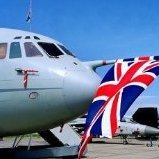
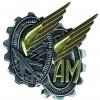
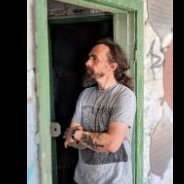

.thumb.jpg.3d6eff3e2f6cc042679bca864bcb2b1a.jpg)



